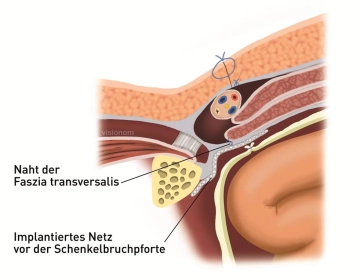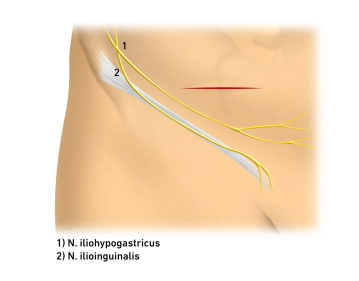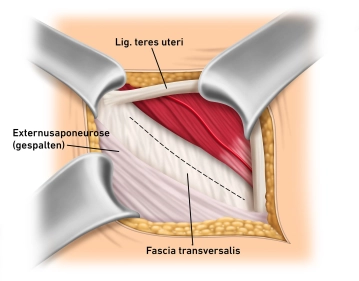The principle of transinguinal preperitoneal mesh repair (TIPP) involves the closure of the femoral hernia orifice with a synthetic mesh introduced via an open inguinal, thus anterior, approach between the parietal peritoneum and the transversalis fascia.
For this, the transversalis fascia must be opened, which is then closed either by a Shouldice suture or by simple suture.




